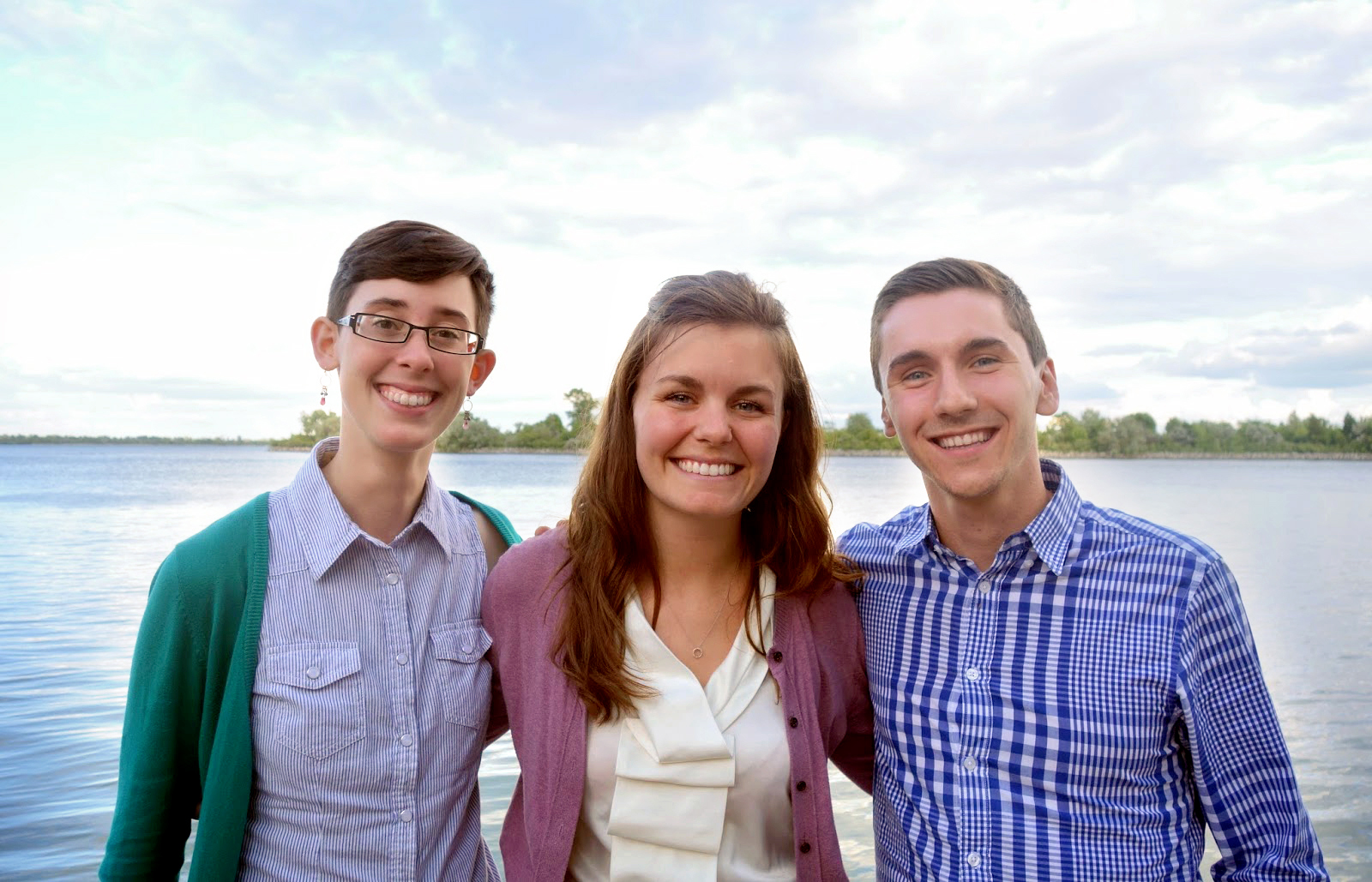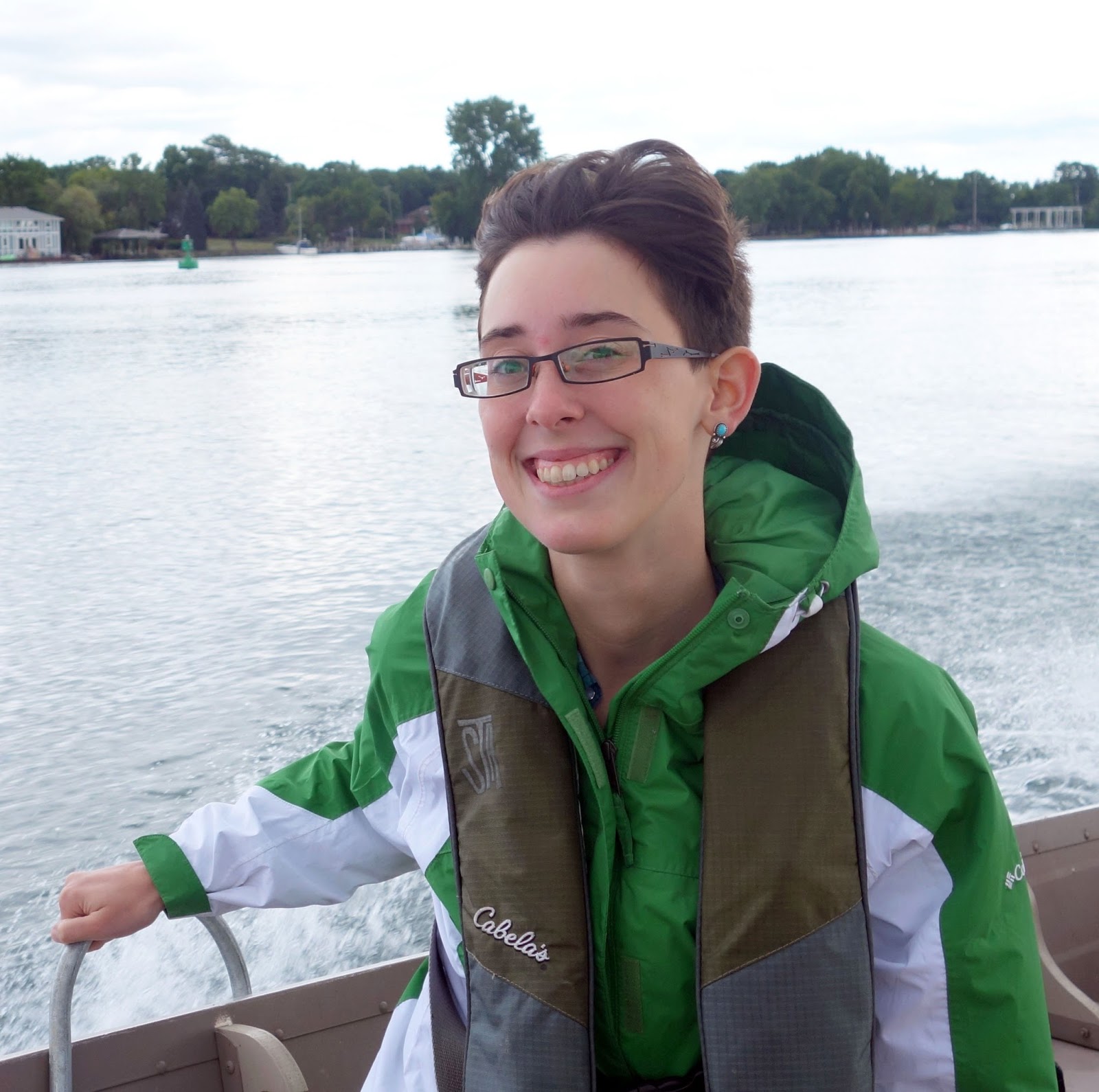The Trenton Channel, part of the 32-mile Detroit River, could see a cleanup in 2016 through the Great Lakes Legacy Act, which combines federal funding with local support. Before that can happen though, voluntary partners must agree to help fund this final cleanup stage. The Detroit River is one of 29 remaining Areas of Concern in the U.S., a result of decades of poor environmental practices. The fast-moving Trenton Channel is one of the top sources of pollution in the river system due to its history of industrial and municipal practices.
Scientists and engineers are currently designing a cleanup plan to address approximately 240,000 cubic yards of sediment in the upper portion of the Trenton Channel. A majority of the community surrounding this remediation project is looking with optimism and enthusiasm to the clean-up efforts. Yet these feelings are by no means unanimous.
Caitie McCoy, IISG social scientist, and her two summer interns—Mark Krupa and Erika Lower—conducted a needs assessment with local stakeholders of Trenton Channel, including environmentalists, recreation enthusiasts, property owners, and city officials. They found that the channel is viewed as important to the region, but that the clean-up plan is viewed with some skepticism.
Caitie explains:
I assumed that everyone would be overjoyed that a sediment remediation project was happening in their community. Yet there were quite a few concerns about the safety and effectiveness of the project. About a third of the stakeholders we interviewed said that cleaning up pollution would provide no significant community benefits.
This needs assessment has given our outreach team a better sense of what is important to our stakeholders. We have a better sense of what information they want about this project.
Increasingly, social science provides the go-to method for Sea Grant programs to develop informed outreach efforts. In the 2014-2015 research cycle, 29 programs funded 59 social science research projects. Additionally, state Sea Grant programs are hiring social scientists.
More from Caitie:
Large-scale needs assessments are a wise investment for big outreach projects. Needs assessments give us detailed information about our audience concerning a topic of interest–in this case, it was sediment remediation. This information would otherwise be difficult to obtain. Even working with an outreach team composed of local leaders, we make a lot of assumptions about our stakeholders. Needs assessments help us cut through those assumptions so that we can understand what our stakeholders are really interested in or concerned about. This helps us design better messaging and better outreach events for our stakeholders.
To learn more about what the researchers learned from Trenton Channel stakeholders, you can download A Needs Assessment for Outreach in the Detroit River Area of Concern’s Trenton Channel.
Our summer internship program has wrapped up for another year. This year, seven students and recent graduates worked with our specialists on a broad range of issues, including AIS prevention, sediment remediation, and water supply planning. Erika Lower and Mark Krupa spent their internship working with Caitie McCoy, IISG’s social scientist.
“We did a little bit of everything this summer—from compiling reports on public perceptions of river cleanups in Detroit and Milwaukee to conducting interviews with community members to covering a day of outreach at Indiana’s Roxana Marsh” said Erika, a graduate from Virginia Tech who also interned last year with Virginia Sea Grant. “Working on so many diverse projects mean there was rarely a slow day at the office.”
Their favorite experiences came while onsite at Great Lakes Legacy Act sediment remediation projects. One such trip took them to the Upper Trenton Channel near Detroit to conduct a needs assessment that will help the project team tailor outreach products and messaging to those who use and visit the river.
“Our Detroit trip was definitely my favorite part,” said Mark, a University of Illinois alum. “We talked to over 30 different community members. It was great to see the site we had researched and really get to know the community, their concerns, and how they value the waterway.”
“How often do you get a chance to tour the site of a former oil refinery or conduct an interview from a powerboat in the middle of the Detroit River while watching the sun rise?” Erika added.
 These experiences further boosted their interest in the social science and highlighted its importance in environmental conservation.
These experiences further boosted their interest in the social science and highlighted its importance in environmental conservation.
“I’ve always been interested in the human dimensions of environmental science, but actually getting out into the field and talking with community members about their hopes and concerns illustrated just how complex finding the best solution to environmental issues can be,” said Erika.
“Before this internship, I didn’t realize how important it is to address local perceptions and concerns surrounding environmental cleanup projects,” said Mark. “Also, I hadn’t realized how much thought goes into designing outreach materials in order to ensure they attract an audience and effectively communicate the message.”
With their internship complete, Erika and Mark are turning their attention to graduate school. Mark will begin a Master’s in public health at Saint Louis University later this month. And Erika plans to complete graduate work in science communication or environmental social science.
 Scientists and engineers are working together to design a clean-up plan for Michigan’s Upper Trenton Channel, where high concentrations of historic pollutants pose a threat to aquatic life and public health. The process began about a year ago with a feasibility study. In January, local residents had a chance to weigh-in on an early draft of the plan. And in the coming years, this Great Lakes Legacy Act project could remove or cap around 240,000 cubic yards of contaminated sediment.
Scientists and engineers are working together to design a clean-up plan for Michigan’s Upper Trenton Channel, where high concentrations of historic pollutants pose a threat to aquatic life and public health. The process began about a year ago with a feasibility study. In January, local residents had a chance to weigh-in on an early draft of the plan. And in the coming years, this Great Lakes Legacy Act project could remove or cap around 240,000 cubic yards of contaminated sediment.
Just as important as the clean-up effort itself, is ensuring that local communities and other key stakeholders understand the project and its goals. But before they can begin public outreach, project partners have to understand and appreciate the role the channel and nearby Detroit River play in the communities.
 That is where IISG’s social scientist Caitie McCoy and her interns Erika Lower and Mark Krupa come in. The three were in Michigan earlier this month to conduct a needs assessment that will help the project team tailor outreach products and messaging to those who use and visit the river.
That is where IISG’s social scientist Caitie McCoy and her interns Erika Lower and Mark Krupa come in. The three were in Michigan earlier this month to conduct a needs assessment that will help the project team tailor outreach products and messaging to those who use and visit the river.
They interviewed around 35 people with diverse backgrounds—everyone from area residents to city planners to members of boating associations—to learn more about their perceptions of the channel and river. The final results of the study won’t be available for a few months, but the interviews have already given Caitie, Erika, and Mark a better understanding of the interests and concerns surrounding this popular recreation site.
“One interesting thing we learned was that the safety of the channel and river during dredging is of prime importance to the community,” said Caitie. “This is a fast flowing channel, and we will need to explain the science and engineering behind what keeps stirred up sediment from flowing downstream during the project—in terms that everyone can understand.”
 An impromptu trip on the channel also gave Caitie, Erika, and Mark deeper insight into how the community uses the channel and river. The trip—which set off bright and early on the 16th—was led by the Wyandotte Rowing Club. Later that night, the group took to the water once again with one of the residents they interviewed.
An impromptu trip on the channel also gave Caitie, Erika, and Mark deeper insight into how the community uses the channel and river. The trip—which set off bright and early on the 16th—was led by the Wyandotte Rowing Club. Later that night, the group took to the water once again with one of the residents they interviewed.
Similar studies for the Sheboygan River and St. Louis River Areas of Concern have already helped shape outreach efforts there and allowed project partners to gauge changes in community perceptions at the end of a clean-up project.
The Upper Trenton Channel, which sits about 20 miles south of Detroit, is part of the Detroit River AOC. Project partners include Michigan Sea Grant, Friends of the Detroit River, the Detroit River Public Advisory Council, the Michigan Department of Environmental Quality, the Michigan Department of Community Health, and the U.S. EPA.







